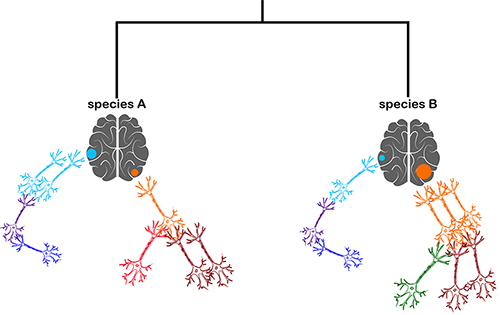The stunning variation in brain morphology has long ignited biologists' interested in relating neuroanatomical differences to intelligence, behavior, and disease. Despite enthusiasm for understanding how and why brains differ, very little is known about their evolution at the level of cells and genes: What are the genetic and developmental steps necessary for new neural circuits to emerge (or be lost) between species? And how are neural circuits that appear to be maintained between species manage to diverge and produce modified behaviors?
A major challenge in addressing these questions is the difficulty in identifying evolutionarily young instances of neural circuit change. Identifying evolutionarily recent changes is necessary for understanding the earliest stages of this process where the responsible molecular mechanisms can still be identified and where the evolutionary forces driving the modifications can still be inferred.
To tackle these questions we bring together computation and experimental approaches (evolutionary genomics, neurogenetics, and molecular biology). The sensory modalities that we are currently working on are olfaction and thermotaxis, and we do this using Drosophila populations and species from around the world.
For more information about the ongoing projects see the arguellolab.org.


